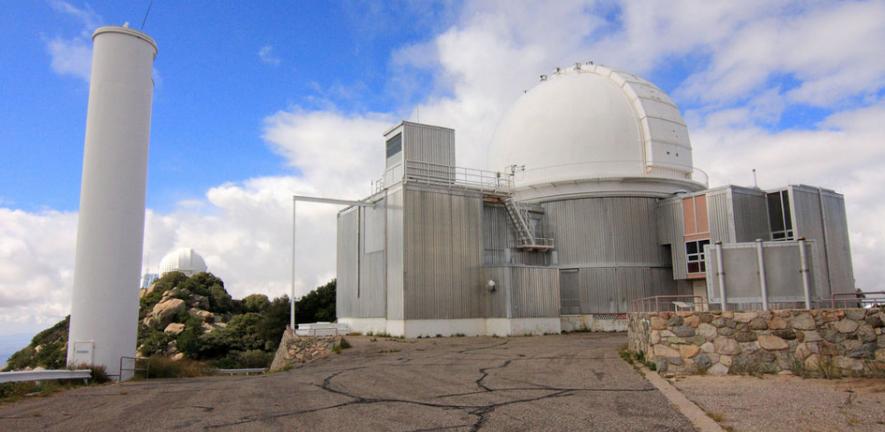
A Cambridge astronomer’s identification of the remnant of the most recent supernova in the Milky Way is set to fill in major gaps in our knowledge of the exploding stars.
A Cambridge astronomer’s identification of the remnant of the most recent supernova in the Milky Way is set to fill in major gaps in our knowledge of the exploding stars.
The discovery that G1.9+0.3 is so young is very exciting. It fits into a large gap in the known ages of supernova remnants, and since it is expanding so quickly, we will be able to follow its evolution over the coming years.
Dr David Green
Dr David Green, Senior Lecturer at the Cavendish Laboratory, led a team which tracked the remnants of a supernova explosion near the centre of our Galaxy, using the National Radio Astronomy Observatory's Very Large Array.
Their discovery will have implications for understanding how often supernovae explode in our galaxy, an important area, as such explosions pump out heavy elements, distributed large amounts of gas, and can trigger the formation of new stars.
The object, known as G1.9+0.3, possesses a number of unique qualities. It is the only remnant that has been seen at such an early stage, but is also the first to increase in radio brightness with time. These properties will allow researchers to learn more about how stars explode and what happens in the aftermath.
It can also be used it to investigate its surrounding environment into which it exploded. Perhaps only a few thousand light years from the centre of the Galaxy, G1.9+0.3 seems to be embedded in the dense environment near the Milky Way's centre.
Dr Green said: "The discovery that G1.9+0.3 is so young is very exciting. It fits into a large gap in the known ages of supernova remnants, and since it is expanding so quickly, we will be able to follow its evolution over the coming years."
G1.9+0.3 was discovered in 1985, and was thought to be a remnant of an explosion between 400 and 1000 years ago. However, X-ray observations made with NASA's Chandra Observatory in 2007 suggested that it was considerably younger, as it had expanded by about 16% in 22 years, a surprisingly large amount.
New radio observations from the VLA made in March this year have confirmed that G1.9+0.3 is expanding very quickly, and revealed that the remnant is no older than 140 years, making it the youngest on record in the Milky Way, superseding the previous holder, Cassiopeia A, which occurred around 1680.
The explosion was not visible in optical light because it took place near the centre of the Galaxy in a dense field of gas and dust. This made it about a trillion times fainter than an unobscured supernova. The remnant, however, can be seen at X-ray and radio wavelengths.
Dr Green and his colleagues discuss the radio expansion in a paper to be published in the journal Monthly Notices of the Royal Astronomical Society. The Chandra X-ray results, led by Dr Stephen Reynolds of North Carolina State University, will appear in The Astrophysical Journal Letters.
This work is licensed under a Creative Commons Licence. If you use this content on your site please link back to this page.





